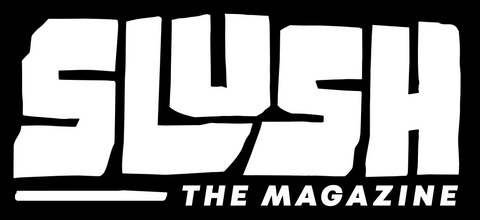
The winter in Europe has been a bit chaotic. We had a great opportunity to go catboarding in Kosovo when it suddenly started raining two days before our departure. We had a plan B for a street mission, but the current snow conditions were quite limiting in terms of destinations. The East seemed to be our best option, or at least the least worst. The crew was locked; we were shooting for Benny Urban's 2-year movie project for VANS. Nils Arvidsson arrived from Sweden, Sebi Springeth from Italy, Benny from Austria, the lovely filmmaker Jaarsi from Finland, and myself from France.
After a few calls to the President of Slovakia, Basa Stevulova, a former snowboarding star and a very busy mom, we were on our way to Bratislava. The city looked really amazing, but sadly, there wasn't a centimeter of snow in town. That’s probably the right moment that we all started to panic. After a few more hours heading east towards Ukraine, we began to find some snow on the roadside and eventually started considering the possibility of finally snowboarding in the streets.

So, here we are, deep in Slovakia, searching for spots methodically listed on Google Maps—you know the story! The further east we drive, the more Soviet influence we feel. Some villages seem frozen in time and haven't changed for decades. The younger generation of teenagers is very cool and welcoming. They're swag; all have the latest-generation phones, so nothing much different from Central Europe. It’s more in comparison to the generations of the Soviet era that the discrepancies and contradictions become apparent. It's quite unsettling, and sometimes it feels like we're living straight out of an old movie scene.
Street missions can get a bit repetitive, after all. We drink a lot of coffee from a wide variety of thermos, we drive around a lot, eat the finest cuisine in various gas stations, and get excited over a beautiful spot before second-guessing for various reasons like: no proper in-run, no landing at all, private property area, high kick-out potential, weekend spots, and so on.

It's funny how perceptions can vary among different people when seeing snowboarders hitting a street spot. Some see teenagers playing in the snow, which is a bit offensive when it’s your job, while others see some kind of menace in their neighborhood.
I honestly feel weird shooting street snowboarding sometimes. I love it, but in a way, maybe it’s a bit stupid when you step back and look at the big picture… I don’t really know what to think anymore. Yet each year I’m excited for another street mission.

About thirty years ago, I opened my first skate magazine. I believe it was a Transworld issue, probably over 300 pages. I didn't know much about photography back then, but some images were taken really up close, which creates unique perspectives and an immersive point of view. It really marked me because buildings were all twisted in the background, and the skateboarders looked a bit distorted with long arms or big feet. I had never seen anything like this in other random magazines or just in life in general. Nowadays, everyone who takes photos with their phone knows what effect a wide-angle lens makes. It allows you to capture a fairly wide scene, distorts the edges a bit, and is especially useful for group selfies. It was only a few years later that I truly discovered what a fisheye lens was: an ultra wide angle.
I'm not really a geek in photography; I just know a few basic things, I guess, but it's interesting to understand how it works in practice. So, a "fisheye" lens looks like what you can imagine, a perfectly round fish eye. The effect can be compared to viewing through a door peephole. History doesn't say if the fish really sees that way, but I hope it doesn’t! So when light enters the curved lens, it follows a different path than it would in a flat lens. This curved path causes the light to spread out over a larger area on the camera's sensor or film. As a result, objects or people closer to the lens appear much larger, and straight lines near the edges of the frame become heavily curved. It has been used a bit in architectural photography, but as the effect is redundant, the trend never really lasted over time but still remains in our microcosm...




















